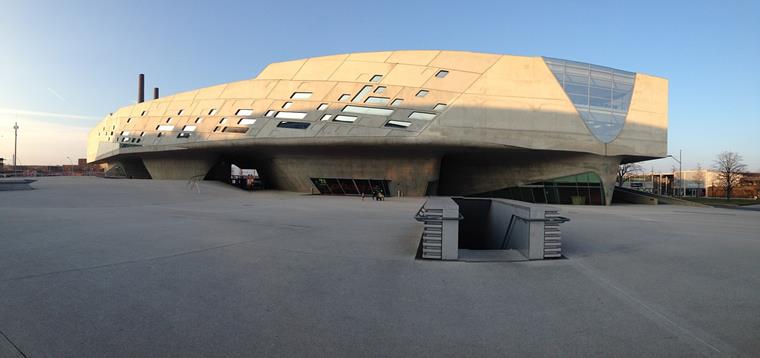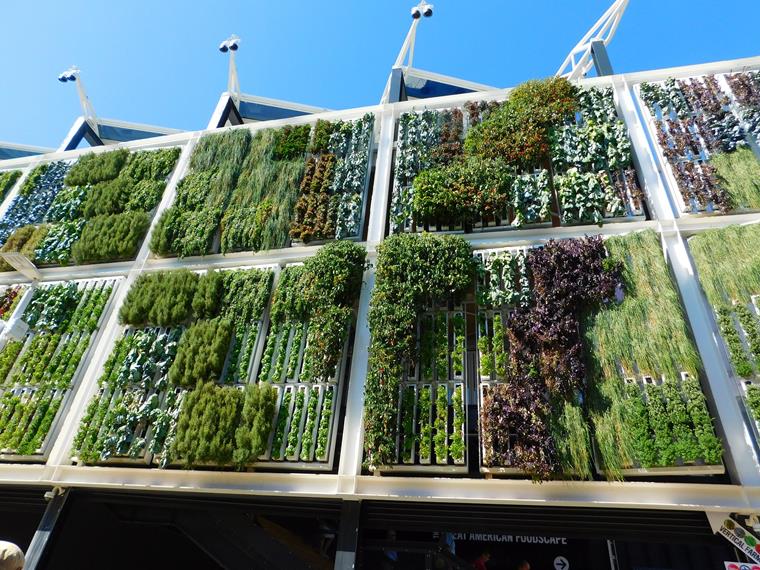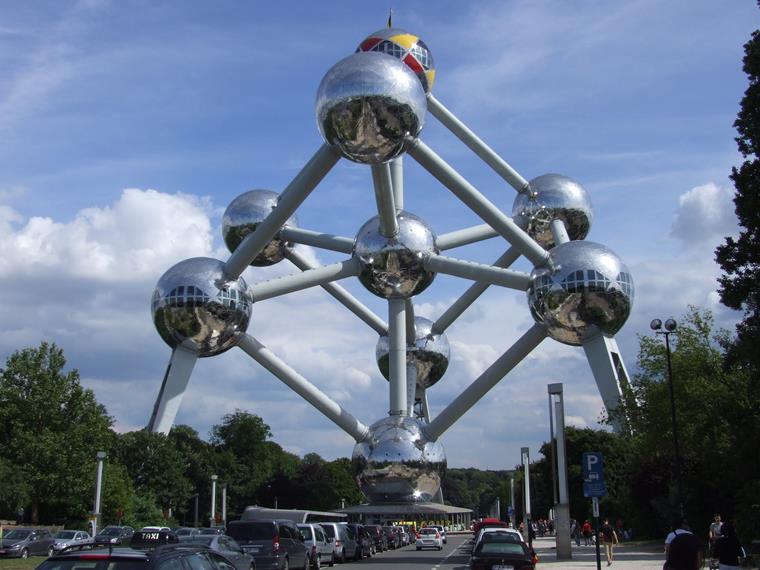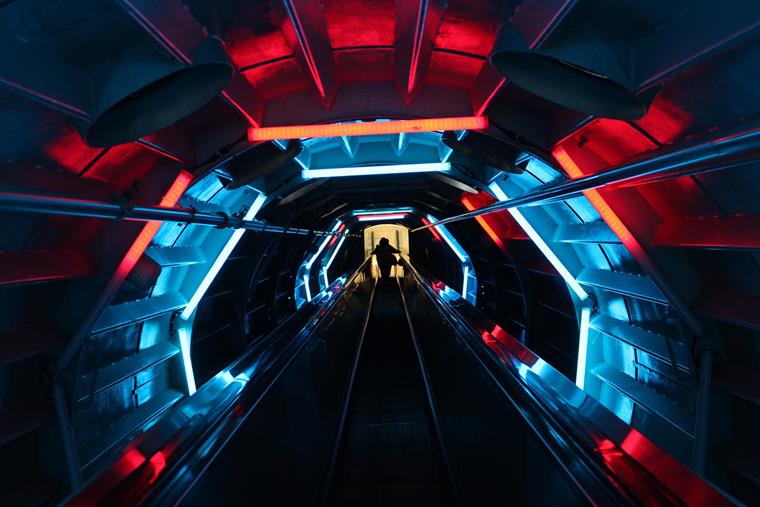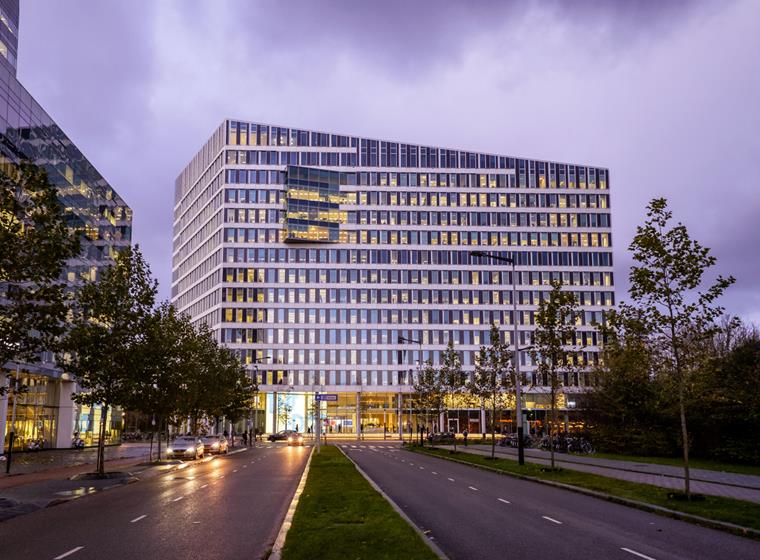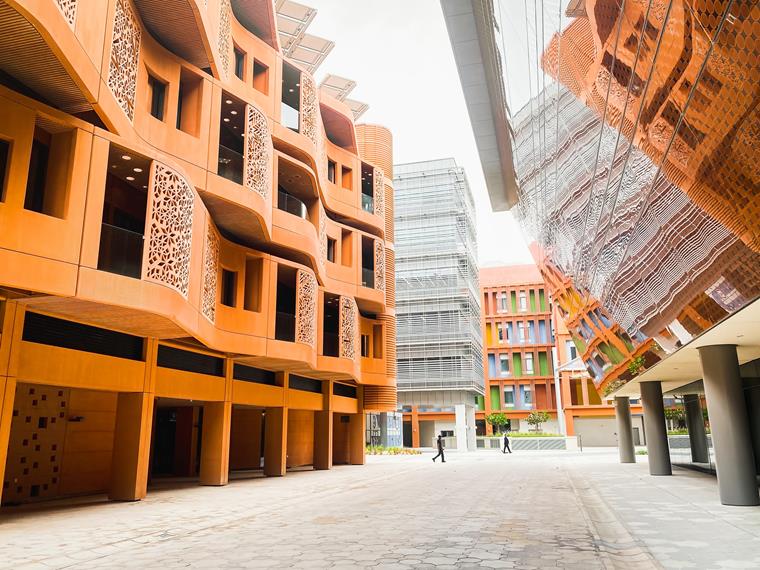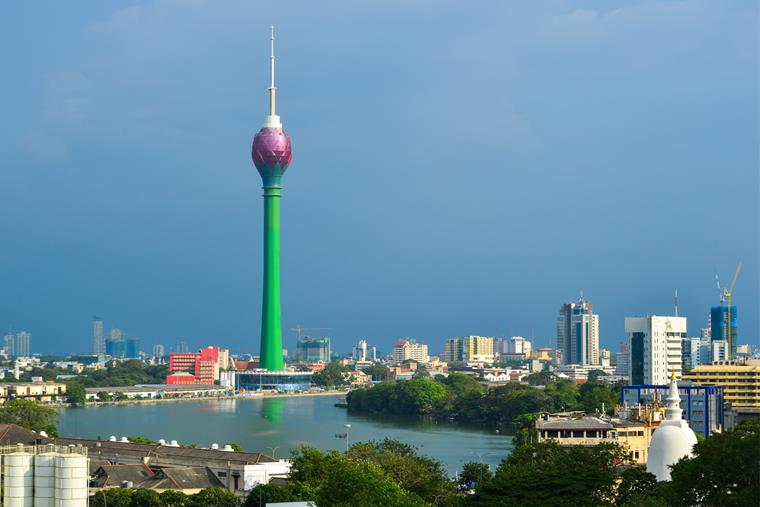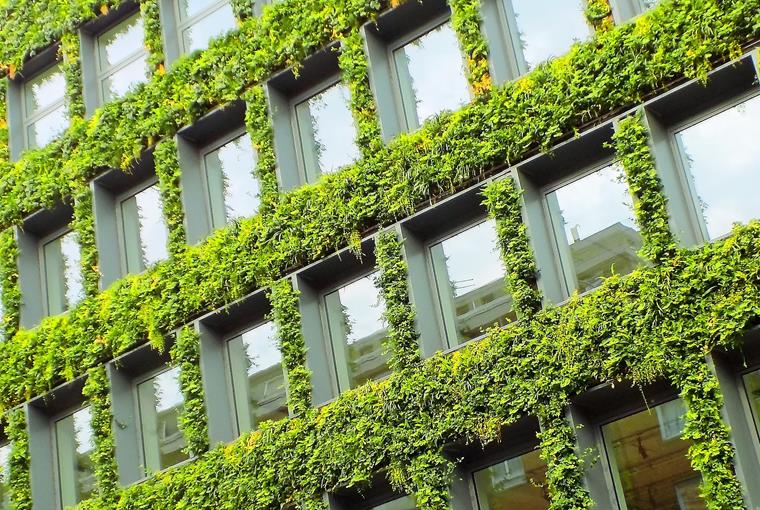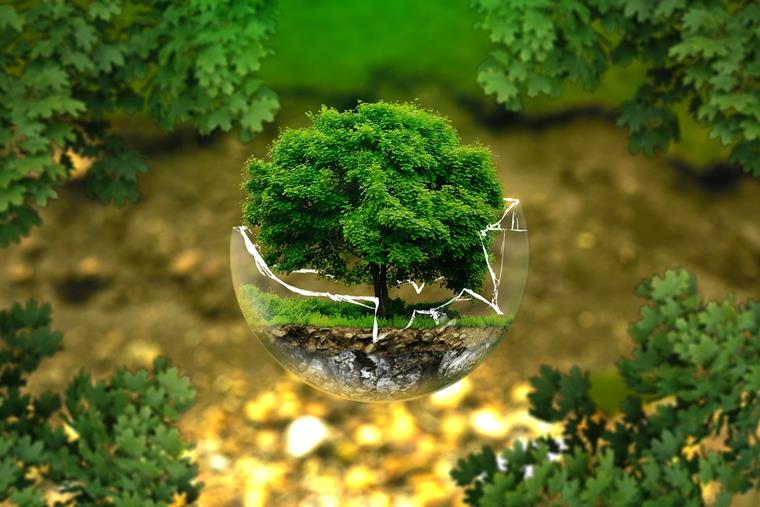The world is constantly changing. New trends are constantly emerging. Some remain; others disappear only to be rediscovered, or to sink permanently into insignificance. In architecture, we can relate to this process in our structures and are amazed by how many different styles there are.
When entering the modern age, architecture faced new challenges. The growing population as well as the new requirements for the construction industry require a rethink. It is precisely the consideration of the effects on the environment and society that gives rise to new questions: How can we design cities and buildings that are not only aesthetic and functional, but give something back to nature and the people themselves?
At the beginning of the 20th century, a time of upheaval and change, a new movement in architecture developed: futurism. Using creative and often revolutionizing approaches, avant-garde design concepts paint a picture of the buildings and cities of tomorrow. What exactly is futurism about? And what can we take from it for our modern construction industry? In this blog post, we take a detailed look at the topic of futurism in architecture. Get excited!
Features of Futurism
Even at first glance, a futuristic building often differs significantly from conventional architectural styles and construction methods. Organic shapes are often used that are inspired by nature, rolling lines, curves, or even surreal, almost abstract structures.
The strong, innovative approach of futurism is also evident in the use of materials. For example, self-healing concrete mixtures or intelligent facades are used, which adapt to the environmental conditions. The design of a futuristic building is often based on a corresponding sustainability concept.
Futurist buildings are designed to use the existing energy more efficiently, for example, by using renewable energy sources, intelligent control systems, and eco-friendly technologies. The idea of futurism does not only refer to individual buildings, as we will see.
The term Smart Cities occurs here, for example. These are the concepts of futurist architecture that are often related to the planning of entire cities. Here, an urban planner uses technologies, such as the Internet of Things (IoT) to achieve an intelligent networking of buildings, transport systems, and infrastructure, and thus improve the lives of residents.
Since the implementation of the idea of futurism in architecture can be very diverse, the buildings that arose from this concept are also very different. This is what makes futuristic buildings so fascinating and interesting. We would like to introduce you to some of them in detail. So let's go on a journey together into the present and the future alike.
Examples of Futurism
Nowadays, futurist buildings can be found all over the world. We start our architectural journey of discovery in Europe. The concept of Smart Buildings has been practiced here for decades and is constantly being developed. This resulted in impressive buildings that often have a symbolic and iconic character. Their shapes alone make them stand out from the mass of city buildings. However, they also have a lot to offer inside.
Atomium
Brussels, Belgium
Like many iconic buildings, the Atomium in Brussels owes its construction to a world exhibition. This almost bizarre piece of science and technology was originally designed for Expo 58 in 1958.
At that time, an accident like the disaster at the Chernobyl nuclear power plant was still unthinkable. Nuclear power was considered a pioneering technology that would change people's lives for the better.
Science and architecture were combined in a very special way. To this day, the Atomium is a symbol of freedom and progress due to scientific achievements. At that time, it set standards in the technological development of the construction industry and showed what was possible with innovative technologies.
It lives up to its namesake. The Atomium consists of nine interconnected spheres. It is a direct reference to the structure of a crystalline unit cell of iron, magnified 165 billion times. This impressive structure was designed by engineer André Waterkeyn and architects André and Jean Polak.
The structure is entirely made of stainless steel. Each of the nine spheres has a diameter of 59 ft (18 m) and a weight of 250 tons. The spheres are arranged in a grid pattern and connected by pipes and escalators.
In fact, the Atomium has had the fastest elevator and the longest escalators in the world for a long time. This is undoubtedly an engineering and architectural masterpiece, not only to design such a concept correctly, but also to build it.
The Atomium was originally intended as a temporary structure for the world exhibition, but precisely due to its symbolic importance, it became so popular that the city bought it and left it as a landmark of Brussels. Since the structure was not intended to be permanent, it was completely renovated between 2004 and 2006.
Today, exhibitions inside the spheres show what shaped the science of the 1950s and how the Atomium itself could be created. If you would like to visit this impressive structure yourself, you can buy tickets directly on site. It's worth it!
The Edge
Amsterdam, Netherlands
The famous office building "The Edge" has become a real landmark for sustainability in the Zuidas business district of Amsterdam. The Dutch real estate developer and investor OVG Real Estate set itself the goal of having a very special building built.
The people of Amsterdam should be given the opportunity not only to work efficiently themselves, but also in an efficient environment. The first plans for The Edge were created in cooperation with the architectural office PLP Architecture. The construction work lasted from 2012 to 2014, and the smartest office building in the world opened in 2015.
It stands out from its surroundings with its glass facade and curved lines, but The Edge can do much more than just look good. It is best known for its high energy efficiency and sustainability concept, which is unique worldwide.
The intelligent facade of The Edge, for example, was designed to save additional lighting for large parts of the day through the optimal use of daylight. This, naturally, improves energy consumption.
However, it is not due only to its facade that The Edge is considered one of the "smartest" buildings in the world. The Internet of Things (IoT) as a smart control optimizes the entire building. Numerous sensors provide information on optimum lighting, heating, cooling, and even cleaning. This allows the system to adapt to the needs of its users.
The intelligence of The Edge covers various sub-areas. Flexible workplaces and generous common areas promote cohesion among the employees. A flexible, innovative, and productive work environment is created.
In addition to optimal working conditions, the focus was primarily on the aspects of sustainability and environmental friendliness. The building should have a minimum impact on the environment. The goal of the architects and investors was to create a new generation of office buildings where modern work and ecological responsibility go hand in hand.
Therefore, in addition to intelligent control units, The Edge also has green spaces and roof terraces. Rainwater is collected there, for example, and used for watering plants and flushing toilets.
The office building in Amsterdam has been awarded numerous prizes and certificates. This includes the BREEAM-NL Outstanding certificate, the highest level of BREEAM certification.
Masdar City Project
Masdar, Abu Dhabi (United Arab Emirates)
We have already talked about the fact that futuristic construction does not always have to refer to individual buildings. Now, we would like to introduce you to an urban project that has been in progress since the early 2000s: a city of the future.
Based on renewable energies, the Masdar City project includes innovative building concepts, an autonomous transport system, and ecological waste management. In fact, it is a city of science with an early goal to be CO2 neutral.
Here, living space for up to 47,500 residents is created on an area of 1,483 acres. About 1,500 companies and institutes from the ecological sector will have their headquarters here. Good connection is also provided, because no residents should ever be more than 656 ft from a stop.
Due to its location by the sea, an ideal water supply with solar-powered desalination plants is available. The plan is to reduce the energy requirement per inhabitant to 25% of the usual consumption. With its own solar power plant and wind power plants, the town's independence should be ensured in the long term.
Consistent recycling should guarantee a waste rate reduced by up to 90%. Instead of parking spaces, fresh-air corridors and parks are planned, which will significantly lower the temperature compared to the city of Abu Dhabi. Because the city itself should be car-free on the surface. An underground, public-autonomous transportation system is planned.
In 2006, the project officially started and ten years later, Masdar City was supposed to be ready for occupancy. It was not only the global financial crisis that upset this timetable. A big problem is still the country's politics. As is usual in the United Arab Emirates, we find autocratic rule of the country here. This means that even a project worth billions, such as Masdar City, is constantly in limbo.
The lack of planning reliability is due to the ability of the Emir's ruling family to withdraw from any agreement at any time. It would not be the first progressive project, whether in the construction industry or in society itself, to fail due to such problems.
In 2016, the completion of Masdar City was expected by 2030. By 2020, only about 5% of the planned structures had been built. Thus, it is to be hoped that the model city for sustainability can successfully prevail to the point of completion, despite all the criticism and political adversities.
The Lotus Tower
Colombo, Sri Lanka
This very special television tower made of steel and concrete can be seen in all its magnificence from a distance. Sri Lanka's tallest structure is also among the tallest structures in Asia and among the tallest television towers in the world.
The long tower with a closed lotus blossom rises to an impressive 1,148 ft (350 m) above the city roofs. This height makes the Lotus Tower a landmark visible from everywhere in the urban area. Such an impressive building naturally attracts many tourists, and as a tourist attraction in Colombo, the tower makes an important contribution to the economy of the region. It must, because the construction costs of the Lotus Tower alone amounted to about $113 million.
In fact, the Lotus Tower was only completed in 2019 and opened in 2022. The construction work is still in progress. In 2023, hardly anything has opened on the eight floors. In addition to its actual function as a television tower for providing local transmitter access, the Lotus Tower will primarily serve as a lookout tower and should have not only various amusement facilities, but also a revolving restaurant, when the final work is completed.
Bosco Verticale (Vertical Forest)
Milan, Italy
The second major urban development concept that we would like to present to you is, strictly speaking, not a specific urban development project at all. Rather, Vertical Forest is an idea of creating sustainable housing developments that adapt to the standards of modern housing and construction.
If there is little horizontal space for a forest or a healthy park, why not just go vertical? The idea for Vertical Forest goes back primarily to Italian architect Stefano Boeri. He developed the Bosco Verticale residential complex, for example, and won the International High-Rise Building Award with this concept.
These are, to be more specific, green twin towers of a high-rise building complex in Milan. Together with his partners from the Boeri Studio architectural office, Gianandrea Barreca and Gioro Boeri La Varra, Boeri planned these sustainable high-rise buildings.
Construction of both residential buildings began in 2008 and was completed just six years later. Their height, between 361 ft (110 m) and 262.5 ft (80 m), is quite considerable for residential buildings. However, much more fascinating are the thousands of plants and trees that cover almost the entire facade.
Yes, you read that correctly: trees on the terraces. To be precise, species that reach a height of up to 29.5 ft (9 m). To resist this load, concrete slabs with a thickness of 11 inches were used for the terraces. The planters are more than 4 ft deep, and gratings in the bottom allow root systems to hold on. This fascinating concept of green housing would be an interesting way to make our cities greener and healthier.
Conclusion
In the future, we can certainly expect more exciting construction projects that will take our construction industry, as well as our living situation, to a new level. Urban development concepts, whether in the form of vertical forests or even underground cities, will become more and more relevant in the near future.
At the beginning and in the middle of the 20th century, architects recognized the need to give a different direction to contemporary construction. These projects were then interrupted by two world wars and their consequences. To this day, many natural areas are built over and disappear, without offering nature anything in return.
In futurism, it was all about creating networked and integrated systems that communicate seamlessly with each other, in order to help us to design comprehensive solutions to complex problems. Technology and people work hand in hand.
What can we learn from futurism?
Especially today, futurism's focus on sustainability and environmental protection is trend-setting for modern architecture. We cannot continue to build on natural areas, build conventional reinforced concrete buildings, and then operate them on fossil fuels. This concept worked for a long time, but we are already feeling the consequences.
In the construction industry, we now have the responsibility to develop solutions. We have to design buildings in such a way that they are efficient, technologically advanced, and compatible with the environment and our society. Our goal should be to create sustainable structures where the residents can live healthily. Such a project requires the courage to experiment, of course, and the development of new, innovative solutions without being limited by traditional patterns of thought.
Futurist architecture is not just about an aesthetic exterior, but about an overall concept with the potential to improve people's lives in the long term. Our cities could become more environmentally friendly and liveable by integrating innovative technologies and sustainability concepts as early as the planning phase.
Today we face greater and greater challenges, especially with regard to population growth, necessary environmental protection, and scarcity of resources. New technologies provide us with the opportunity to radically change the way we build and design entire residential complexes.
